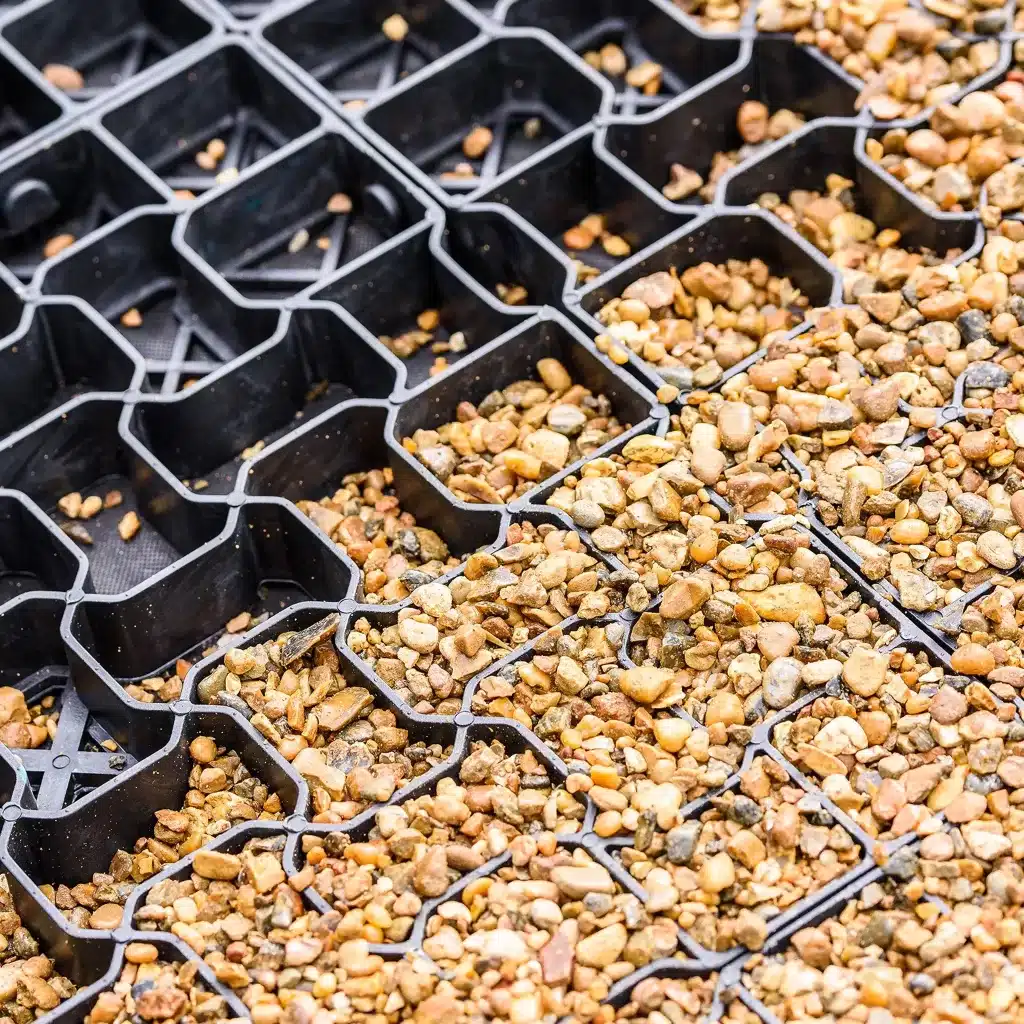+86-159 9860 6917
info@geofantex.com
geofantex@gmail.com
+86-400-8266163-44899
A geogrid consists of a 2-dimensional arrangement of integrally connected tensile elements or ribs that form a grid or net-like structure, usually supplied in roll form. Manufactured from polymers, geogrids are classed as geosynthetic products; this is a broad product classification that includes geotextiles and geomembranes alongside other minor categories.
GeoFanTex geogrids are typically manufactured from oriented high-density polyethylene (HDPE) or polypropylene (PP) for durability, stiffness, and strength. The junctions between ribs are integrally formed giving them high strength and structural stability.
Geogrids are used to solve civil and geotechnical engineering problems in or on the ground. They primarily provide a stabilization or reinforcement function, to add to or enhance the properties of soil or aggregate materials.

What is the purpose of geogrid mesh?
Geogrids primarily serve the purpose of stabilizing or reinforcing soils, improving their overall performance. Additionally, they facilitate separation between soil and aggregate layers, making them extensively utilized in various civil engineering applications.
Is Geogrid necessary?
In cases where the weight of the VERSA-LOK wall units alone is insufficient to withstand the force exerted by an unstable soil wedge or any imposed load, the implementation of geogrid soil reinforcement becomes necessary. Horizontal layers of geogrid offer the required tensile strength to effectively bind the reinforced soil mass together.
How far back does geogrid go on retaining wall?
It is important to ensure that the top layers of geogrid are positioned within a maximum distance of 3 units from the top of the wall. Similarly, the bottom layers of geogrid should be placed within a maximum distance of 3 units from the top of the leveling pad. This ensures proper and effective distribution of the geogrid reinforcement throughout the retaining wall system.
How effective is geogrid?
Geogrids have demonstrated practical effectiveness in mitigating rutting damage, distributing traffic loads evenly across pavement foundation layers, enhancing the resilient modulus of the base course, and stabilizing the subgrade layer.



Get Free Sample
We’ll respond as soon as possible(within 12 hours)






















